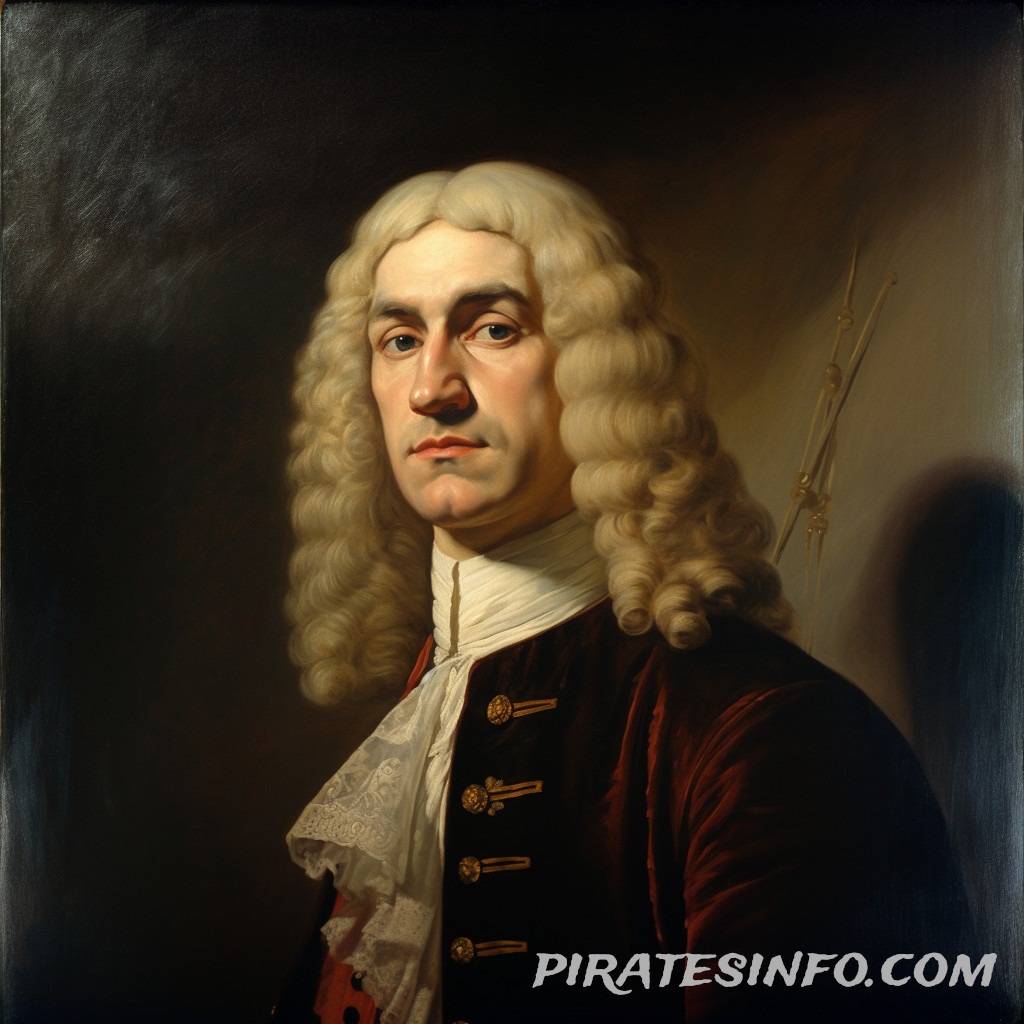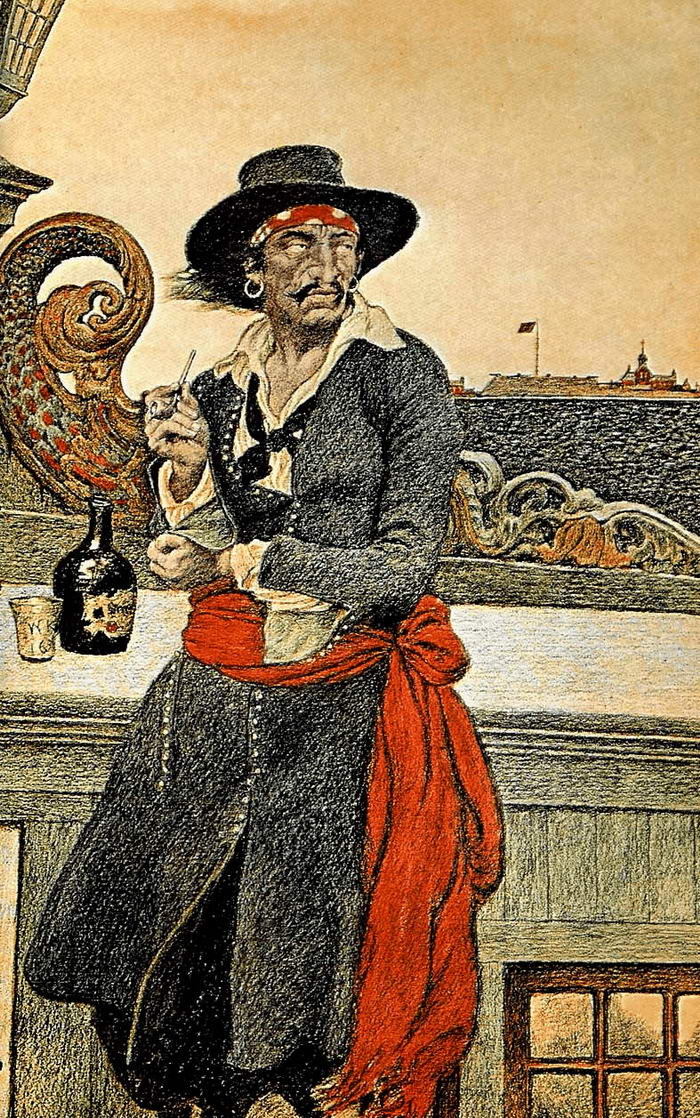
Captain Kidd: Pirate, Privateer, or Political Pawn? The Enduring Mystery of a Condemned Man
The name Captain Kidd conjures images of buried treasure, tattered maps, and swashbuckling adventures on the high seas. He is a quintessential figure of pirate lore, immortalized in legend and fiction. Yet, the historical William Kidd was a far more complex figure than the caricature of a villainous buccaneer. Was he a cold-blooded pirate who betrayed his commission for ill-gotten gains, or a respected privateer ensnared by political intrigue and circumstance, ultimately becoming a scapegoat for powerful patrons? Three centuries after his dramatic execution, the debate continues, leaving behind a trail of unanswered questions and an enduring fascination.
Born in Greenock, Scotland, around 1645, William Kidd’s early life was one of maritime endeavor, not infamy. He established himself as a successful and reputable privateer – a government-sanctioned sailor who attacked enemy shipping during wartime – operating out of New York. He gained a reputation for skill and courage, even being commended by the colonial government for his efforts against French privateers in the Caribbean. He was a man of property, married to a wealthy widow, and seemingly far removed from the desperate, lawless world of piracy.
/Kidd-566214185f9b583dc36699c9.jpg)
This respectable image, however, was shattered by one fateful voyage. In 1695, Kidd was approached by a consortium of powerful English noblemen, including the Earl of Bellomont, who was soon to be appointed Governor of New York and Massachusetts. Their proposition was ambitious: equip a heavily armed ship, the Adventure Galley, and commission Kidd to hunt down and suppress pirates plaguing the lucrative trade routes of the Indian Ocean, particularly those operating from Madagascar. He was also authorized to seize French vessels, as England was then at war with France. This was not a typical privateering venture; it was a high-stakes, semi-official mission backed by the Crown itself, aimed at restoring order to vital shipping lanes.
Kidd’s commission, signed by King William III, was clear: target pirates and French ships. However, the line between privateering and piracy was notoriously thin, often blurring depending on interpretation, political expediency, and the ever-present temptation of vast riches. This ambiguity would prove to be Kidd’s undoing.
The Adventure Galley set sail from England in 1696, a formidable vessel armed with 34 guns and a crew of 150 men. Kidd’s initial efforts were largely unsuccessful. He found no pirates, and the lack of prizes led to dwindling morale and a restive crew. The pressure to deliver a return on his powerful investors’ significant outlay mounted. Supplies ran low, sickness spread, and the men grew increasingly mutinous, demanding action and plunder. It was a perilous situation for any captain, let alone one operating thousands of miles from any reliable authority.
It was during this desperate period that Kidd’s actions took a controversial turn. Accounts vary, but several incidents fueled the accusations against him. He reportedly attacked a convoy of Indian merchant ships under the protection of the Dutch East India Company, though he claimed to have been fired upon first. More damningly, he killed a gunner, William Moore, during an argument, striking him with a bucket. Kidd maintained it was an act of self-defense after Moore verbally abused him and threatened mutiny. This act, while a crime, did not automatically make him a pirate, but it certainly painted him as a captain losing control.
The most critical incident, however, involved the capture of the Quedagh Merchant in February 1698. This large Armenian merchant ship, laden with valuable silks, muslins, sugar, and opium, was sailing under French passes. Kidd maintained that these French passes made it a legitimate prize under his commission, as England was at war with France. His crew, eager for plunder, certainly agreed. The Quedagh Merchant was a treasure trove, its cargo valued at an estimated £70,000 – an immense sum at the time. Kidd claimed only a portion of its cargo, distributing the rest among his crew.
News of Kidd’s activities, however, had already reached London, distorted and exaggerated. Reports painted him as a rogue pirate, attacking neutral shipping and preying on innocent merchants. The powerful East India Company, whose trade routes he was supposed to protect, began to lobby furiously against him, their reputation and profits threatened by perceived lawlessness. The political climate in England was also volatile, with the Whig party, many of whom were Kidd’s patrons, under fire from the Tories. Kidd, by his alleged actions, became a convenient target, a way for the Whigs’ opponents to discredit them.
Upon learning he had been declared a pirate and an order for his arrest issued, Kidd sailed to the Caribbean, hoping to clear his name. He abandoned the Adventure Galley, which had become worm-eaten and leaky, and transferred his remaining crew and a portion of the Quedagh Merchant‘s treasure to a smaller sloop, the Antonio. He made his way to Gardiner’s Island off Long Island, New York, where he reportedly buried some of his most valuable goods, including gold, silver, and jewels, with the permission of the island’s owner, John Gardiner. This act, perhaps an attempt to secure his assets before facing justice, inadvertently cemented his image as a classic pirate with buried treasure.
When he finally met with Governor Bellomont in Boston, expecting to present his case and clear his name, Kidd was instead arrested on July 6, 1699. Bellomont, caught between his personal investment in Kidd’s mission and the political firestorm raging in London, found himself in a precarious position. To protect himself and his fellow noble investors, he likely decided that sacrificing Kidd was the only way out.

Kidd was transported to England in chains, a journey that took several months. He arrived in London to face a hostile public and a politically motivated trial. Imprisoned in Newgate Prison, he was denied proper legal counsel and access to the crucial French passes that he claimed legitimized his capture of the Quedagh Merchant. These passes, he insisted, would prove his innocence, but they mysteriously vanished, only to resurface years later – long after his fate had been sealed.
His trial at the Old Bailey in May 1701 was a travesty of justice. He was charged with piracy for attacking the Quedagh Merchant and four other ships, and for the murder of William Moore. The prosecution relied heavily on the testimony of two former crew members, Robert Bradinham and Joseph Palmer, who had turned King’s evidence to save their own lives. Kidd vehemently denied the charges, proclaiming his innocence. "I am the innocentest person of them all," he declared, "only I have been sworn against by perjured villains." He repeatedly pleaded for the French passes, stating, "If I had these papers, I should not have been in this place." But his pleas fell on deaf ears. The political establishment needed a pirate, and Kidd fit the bill perfectly.
Unsurprisingly, William Kidd was found guilty on all counts of piracy and the murder of William Moore. He was sentenced to death. On May 23, 1701, he was taken to Execution Dock at Wapping, a notorious site on the River Thames where pirates and mutineers met their end. His first attempt at hanging failed when the rope broke, sending him plunging into the mud below. He was hauled back up and successfully hanged on the second attempt. His body was then publicly gibbeted – encased in an iron cage and left to rot – as a grim warning to other aspiring buccaneers. His remains hung over the Thames for years, a macabre symbol of the Crown’s power.
Despite his ignominious end, Kidd’s story refused to die. The legend of his buried treasure, particularly the cache on Gardiner’s Island, became a cornerstone of pirate mythology. While much of the treasure from the Adventure Galley and the Quedagh Merchant was eventually recovered by Governor Bellomont and sold, its total value falling far short of the initial wild estimates, the idea of undiscovered riches persisted. Robert Louis Stevenson’s "Treasure Island," with its mysterious maps and buried gold, owes a debt to Kidd’s legend.
In modern times, historians continue to re-examine Kidd’s case. Many argue that he was indeed a scapegoat, a victim of political maneuvering and the inherent ambiguities of privateering. He was commissioned to capture French ships and pirates, and when he did capture a ship with French passes, he was condemned for it. The suppression of the crucial French passes during his trial remains a particularly damning detail, suggesting a deliberate attempt to deny him a fair defense.
William Kidd was a man caught between two worlds: the legitimate world of commerce and state-sanctioned warfare, and the lawless realm of the open sea. He was a privateer who, under immense pressure and perhaps some questionable judgment, crossed a line that his powerful patrons could not afford to acknowledge. His downfall serves as a cautionary tale, illustrating how easily a reputation can be shattered and a man’s life sacrificed on the altar of political expediency.
Today, Captain Kidd remains an enigma. Was he a pirate who turned on his benefactors, or a respected captain betrayed by them? The truth, perhaps, lies somewhere in the murky waters between fact and legend, a testament to a turbulent era when the seas were wild, justice was often selective, and the line between hero and villain was as shifting and treacherous as the tides themselves. The ghost of Captain Kidd, forever linked with buried gold and a dubious legacy, continues to sail through the annals of history, a perpetual subject of fascination and debate.


